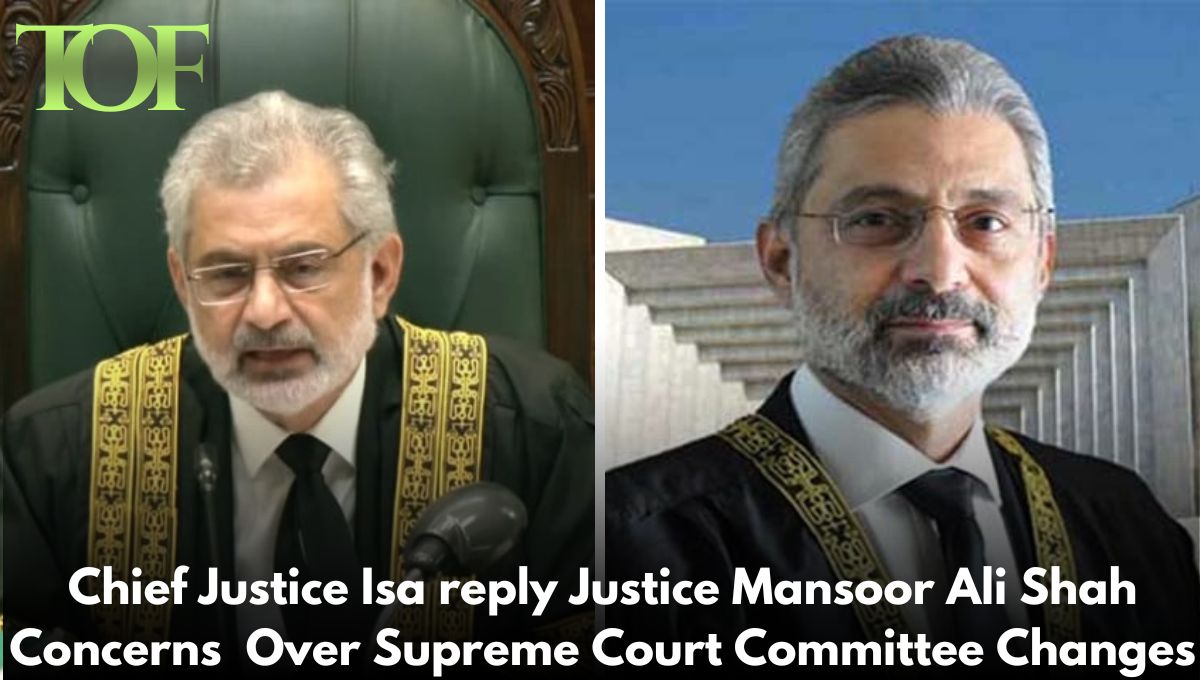Pakistan Chief Justice, Qazi Faez Isa reacted to the criticism that had erupted over the exclusion of Justice Munib Akhtar from the Supreme Court Practice and Procedure Committee by the Chief Justice of Pakistan with one of the senior judges of the Supreme Court, Justice Mansoor Ali Shah, raising his reservations over the formation of the committee and even questioning the removal of Justice Akhtar. The case had gained media prominence following reports by local media, although much of internal communication was still unseen.
Justice Mansoor had earlier lamented the inappropriateness of the composition of the Practice and Procedure Committee, believing that Justice Munib Akhtar was not a member of the committee. His dissent added fuel to an ongoing debate on whether the role and scope of the committee made it inappropriate to deal with judicial procedures. Justice Mansoor voiced dissent by refusing to attend the committee’s meetings and highlighted what he considered exclusions of key voices in the process.
Justice Mansoor’s reservations went well beyond an objection simply to the exclusion of a colleague. He objected to how the committee was formed and, in particular, to the presidential ordinance under which it was established. That ordinance is that which allows the committee to propose reforms in judicial processes and has been criticized to some extent, including by Chief Justice Isa, among others, who argued that it may undermine judicial independence.
In response to his reservations, Chief Justice Isa explained to him the circumstances that led to Justice Akhtar’s exclusion. Although the contents of Chief Justice Isa’s letter remain confidential, insiders on the issue say that several reasons were presented by the Chief Justice for the exclusion.
Primarily, the strict behavior of Justice Akhtar towards the high judiciary was one of the primary factors. It is claimed that CJP Isa had found the issues related to the sense of cooperation within the committee mainly due to the behavior of Justice Akhtar. Moreover, his resistance towards the Practice and Procedure law and not attending committee meetings during summer vacation when he was off-work, was mentioned as his justification.
Chief Justice Isa clarified that Justice Yahya Afridi was actually invited when he begged off, and thus Justice Aminuddin Khan came in to replace him. The Chief Justice said all this reshuffling was necessary so that the committee could get on with its job despite the absence of certain personages.
The Broader Implications
At an early stage, the Practice and Procedure Committee has already become a controversial issue, with opposing views among the judiciary about its role and the effects of the presidential ordinance in which it sits. Critics, such as Justice Mansoor, believe there is a risk of intervention in judicial independence; naturally, remits being narrower could mean some being barred from participating in significant decision-making processes.
The admirers look at the committee as a step toward reformation of archaic judicial practices while also clearing the ways for the judiciary in the country to be more effective and transparent. Justice Munib Akhtar, an influential judge, could not come and was absent from the deliberations, which has opened mouths on whether diverse opinions are being heard by this committee. To help dissipate these doubts, Chief Justice Isa has defended the core purpose of this committee as judicial reform.
The internal rifts regarding the Practice and Procedure Committee are going to continue to dog the Supreme Court as it moves ahead with its work. The differences between Chief Justice Isa and Justice Mansoor are more than a personal animus; they represent the larger debate on judicial reform, the measure of judicial independence, and the elevation of senior judges to determine Pakistan’s future judiciary.
The court will have to confront questions such as these in a legal landscape that will often be more complicated with an imperative to procedural reform weighed against the imperative to judicial independence. More insight into this can be sensed in the coming months in how the Practice and Procedure Committee develops. Its capacity to manage its internal differences while still ensuring it plays a necessary critical role in holding the rule of law in Pakistan will continue to be tested.
To Read More: Local News

